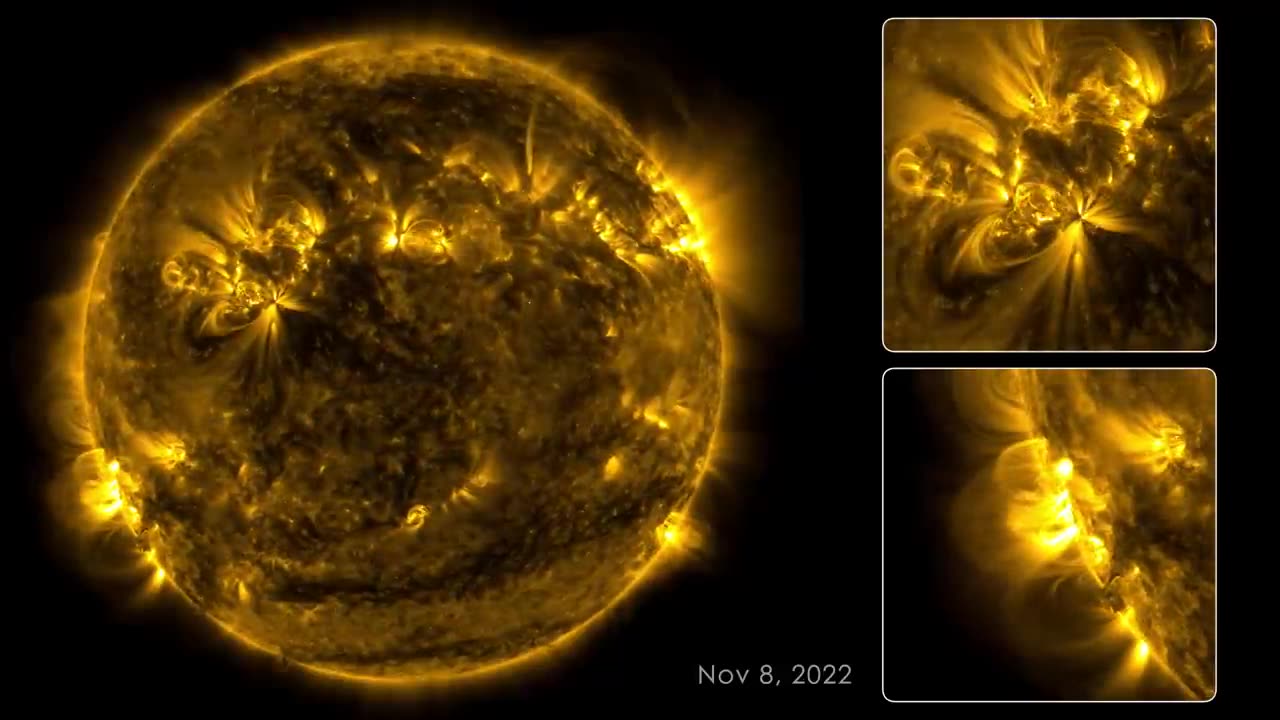Premium Only Content

133 Days on the Sun
as they pass between the spacecraft and the Sun. Other blackouts are caused by instrumentation being down or data errors. SDO transmits 1.4 terabytes of data to the ground every day. The images where the Sun is off-center were observed when SDO was calibrating its instruments. SDO and other NASA missions will continue to watch our Sun in the years to come, providing further insights about our place in space and information to keep our astronauts and assets safe. The music is a continuous mix from Lars Leonhard’s “Geometric Shapes” album, courtesy of the artist. Credit: NASA's Goddard Space Flight Center Scott Wiessinger (PAO): Lead Producer Tom Bridgman (SVS): Lead Visualizer Scott Wiessinger (PAO)ot be excised or remixed in other products. Specific details on such imagery may be found here. For more information on NASA’s media guidelines, visit. Video Description: On the left side of the frame is the full circle of the Sun. It appears in a golden yellow color, but splotchy and with thin yellow wisps extending from the surface. Some areas are very bright and others almost black. The whole Sun rotates steadily, with one full rotation taking 12 minutes in this time lapse. There are usually only a few bright regions visible at a time and they shift and flash like small fires. From these regions there are wispy loops reaching up above the surface that rapidly change shape and size. On the right side of the frame are two white-outlined squares with enlargements of interesting regions of the Sun.
-
 LIVE
LIVE
Matt Kohrs
9 hours agoPowell Testifies, Musk OpenAI Drama & Markets Turn South || The MK Show
1,973 watching -
 17:40
17:40
Clownfish TV
12 hours agoUSAID Paid for Leftwing Media and Politico CAN'T Pay Their Employees?!
5072 -
 40:21
40:21
Randi Hipper
1 hour agoTHIS COIN IS GOING TO BLOW UP IN 2025! LATEST BITCOIN NEWS
874 -
 34:39
34:39
BonginoReport
5 hours agoWhy Did My Tax Dollars Fund a Terrorist’s Tuition??? (Ep.137) - 02/11/2025
68.7K111 -
 LIVE
LIVE
Wendy Bell Radio
6 hours agoCongress Needs To Go To Rehab
12,542 watching -
 1:23:25
1:23:25
Graham Allen
3 hours agoJudge BLOCKS Trump Fed Worker Buyout Offer!! + Google Has Up-Dated “Gulf Of America” FINALLY!
36.2K24 -
 1:06:19
1:06:19
2 MIKES LIVE
2 hours agoTHE MIKE SCHWARTZ SHOW with DR. MICHAEL J SCHWARTZ 02-11-2025
6.52K2 -
 6:00
6:00
AlaskanBallistics
8 hours agoBanish Suppressors Shot Show 2025
3.71K -
 LIVE
LIVE
Vigilant News Network
15 hours agoElon Musk EXPOSES One of the Largest Financial Scandals in History | The Daily Dose
1,167 watching -
 1:03:11
1:03:11
Miss Understood With Rachel Uchitel
4 days agoDefending the Indefensible: The Man Behind the Most Controversial Cases – Attorney Norm Pattis
16.1K2